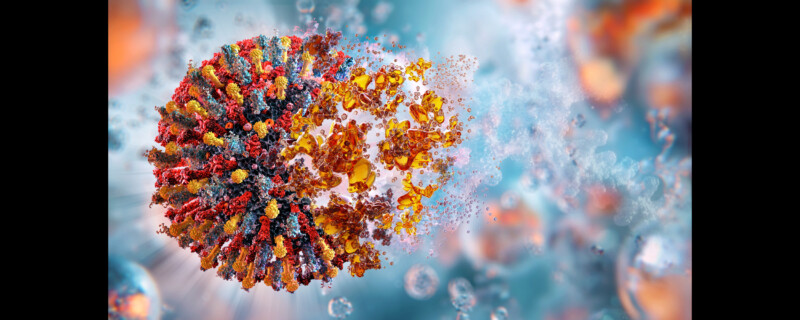
Smarter Cell Culture Strategies for Vaccine Manufacturing: Three Essential Resources
In vaccine manufacturing, upstream process optimization is critical to reducing cost, increasing yield, and safeguarding product safety. Whether you’re developing viral vaccines using adherent cell lines or transitioning toward scalable, serum-free systems, the tools and reagents you choose can make or break your efficiency. Thermo Fisher Scientific has released three timely and insightful resources that address key challenges in cell dissociation, media formulation, and the shift away from animal-origin components. Together, these documents offer a powerful knowledge base for manufacturers looking to modernize their platforms.
This article provides a detailed preview of each piece, highlighting what you’ll learn and why it matters. Each resource is available for free download and provides practical data, performance comparisons, and expert insights.
TrypLE Select Enzyme: High Stability, Low Risk, No Animal Components
The first resource is an application note detailing the performance of Gibco™ TrypLE™ Select Enzyme, a recombinant, animal origin–free alternative to porcine trypsin. Widely used in cell culture, trypsin has long been a go-to for detaching adherent cells. However, it comes with notable drawbacks: batch variability, limited stability, contamination risks, and the need for neutralization using fetal bovine serum (FBS).
TrypLE Select was developed to address each of these issues. This application note presents robust experimental data demonstrating the enzyme’s excellent thermal stability, purity, and compatibility with multiple mammalian cell lines commonly used in vaccine production, such as Vero, MDCK, and CHO-K1. The study shows that TrypLE Select retains over 85 percent of its enzymatic activity after eight days at 37°C, whereas porcine trypsin loses most of its activity after just 24 hours. Furthermore, high-performance liquid chromatography (HPLC) results reveal a single purity peak for TrypLE Select, indicating superior formulation consistency.
The application note also evaluates short- and long-term cytotoxicity, the need (or lack thereof) for trypsin inhibitors, and performance across multiple cell passages. Results confirm that cell viability remains above 95 percent and that cell yield is comparable or better than traditional trypsin across all tested cell types.
This resource is especially valuable for teams standardizing their processes or seeking a more stable, safer, and regulatory-friendly dissociation enzyme. If you’re looking to reduce variability, remove animal components, and/or simplify storage and handling, this is a must read.
Separation Anxiety: Cell Dissociation Challenges in Vaccine Manufacturing
The second featured resource is a thought-leadership article exploring the complexities of cell dissociation in the context of vaccine production. It begins by acknowledging the foundational role of adherent cell lines such as Vero, MDCK, and MRC-5 in historical vaccine development. These cell lines promote high viral titers and are backed by decades of regulatory familiarity. However, their adherent nature necessitates multiple dissociation steps during passaging and scale-up, introducing logistical and quality risks.
The article clearly outlines the three main dissociation methods—mechanical, chemical, and enzymatic—and the advantages and trade-offs of each. Mechanical approaches are reagent-free but often inconsistent. Chemical methods avoid altering cell surface proteins but can be slow and batch-variable. Enzymatic methods, especially those using trypsin, are fast and efficient but come with their own set of challenges related to origin, contamination, and inactivation.
This resource delves into those challenges in detail, especially the risks of using animal-origin trypsin. These include potential contamination by adventitious agents, inconsistent performance, supply vulnerability, and the use of FBS for inactivation. The article makes a compelling case for transitioning to animal origin–free enzymes such as TrypLE, which offer high specificity, compatibility with serum-free systems, and simplified regulatory pathways.
It concludes with guidance for manufacturers evaluating AOF solutions and provides specific examples of how reagents like TrypLE can enable more robust, scalable, and compliant vaccine production workflows.
Serum-Free vs. Serum-Supplemented Media: What the Data Show
The third and most in-depth document is a comparative white paper analyzing serum-containing, serum-reduced, and serum-free media for three widely used vaccine cell lines: Vero, MDCK, and MRC-5. It answers a common question among vaccine developers: can serum-free systems really match or exceed the performance of traditional FBS-based approaches?
The answer, supported by substantial data, is yes. The white paper presents cell growth, morphology, and virus yield results using multiple media types, including Gibco™ Vaccine Production Serum-Free Medium (VP-SFM), Gibco™ OptiPRO SFM, and Gibco™ Diploid Growth Serum-Reduced Medium (SRM). It evaluates performance in T-flasks, spinner flasks with microcarriers, and bioreactor setups, offering realistic insight into how these media perform across formats.
For Vero cells, growth and viral titers in VP-SFM were found to be significantly higher than in MEM-α supplemented with 5 percent FBS. MDCK cells cultured in OptiPRO SFM showed equal or better performance compared to serum-containing conditions, with the added benefit of being fully chemically defined. MRC-5 cells, despite their limited passaging capacity, were shown to grow robustly in serum-reduced and serum-free formulations when properly adapted. Multiple recovery and expansion protocols are documented, demonstrating flexibility in integrating these new media.
In addition to experimental findings, the white paper addresses regulatory and economic implications. Serum-free and serum-reduced media reduce costs, improve supply chain security, eliminate the need for extensive serum qualification, and streamline downstream purification by eliminating bovine serum albumin and other unwanted components.
This document is essential reading for anyone managing process development, regulatory submissions, or upstream technology transfer in vaccine production.
Download the Full PDFs
Each of these resources offers insights that can help you enhance consistency, reduce contamination risks, lower costs, and align with regulatory trends. Download all three to get practical guidance backed by real-world data, whether you’re rethinking your cell dissociation method, replacing animal-derived reagents, or moving toward fully defined media systems.
If you are ready to strengthen your vaccine manufacturing platform with scalable, serum-free, and animal origin–free solutions, these documents are the place to start. https://www.thermofisher.com/us/en/home/global/forms/bioprocessing/cell-culture/vaccine-production-resources.html